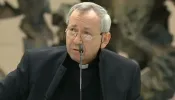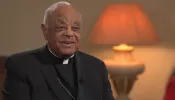I. What Is Pornography?
The term "pornography" is a generic, not a legal term. As noted by the Supreme Court in its Miller v. California, 413 U.S. 15 (1973) obscenity case:
“Pornography” derives from the Greek (harlot, and graphos, writing). The word now means “1: a description of prostitutes or prostitution 2. a depiction (as in a writing or painting) of licentiousness or lewdness: a portrayal of erotic behavior designed to cause sexual excitement.” Webster's 3rd New Intern. Dictionary [Unabridged 1969].
II. What Is Obscenity?
The term “obscenity” is a legal term, and in Miller v.
First, that the average person, applying contemporary community standards, would find that the work, taken as a whole, appeals to the prurient interest; AND second, that the work depicts or describes in a patently offensive way, as measured by contemporary community standards, “hardcore” sexual conduct specifically defined by the applicable law; AND third, that a reasonable person would find that the work, taken as a whole, lacks serious literary, artistic, political and scientific value.
Side note: Typical “hardcore pornography” (e.g., a magazine, DVD or Web site) consists of little if anything more than one depiction of hardcore sex after the other (i.e., it’s “wall-to-wall” sex).
III. Obscenity Is Not Protected By The First Amendment
A. First Amendment was not intended to protect “every utterance”
The First Amendment reads: “Congress shall make no law …prohibiting the free exercise [of religion]; or abridging the freedom of speech or of the press.”
But as Justice Brennan observed in Roth v. United States, 354
B. First Amendment intended to protect ideas and debate, not obscene materials
In the 1973 obscenity case, Miller v. California, 413
[I]n our view, to equate the free and robust exchange of ideas and political debate with commercial exploitation of obscene material demeans the grand conception of the First Amendment and its high purposes in the historic struggle for freedom. It is a “misuse of the great guarantees of free speech and free press”
Rest assured that our nation’s founding fathers did not lay their fortunes, sacred honor and lives on the line so that citizens could produce and distribute pornography.
C. Enforcement of obscenity laws is not “censorship”
There is a difference between a prior restraint upon publication and subsequent punishment. Obscenity laws are enforced after publication. In Near v. Minnesota, 283 U.S. 697, 714-715 (1931), the Supreme Court said that the “main purpose” of the freedom of speech and press clause was “‘to prevent all such previous restraints upon publications as had been practiced by other governments,’ and they do not prevent the subsequent punishment of such as may be deemed contrary to the public welfare.”
IV. Governmental Justifications For Obscenity Laws
In Paris Adult Theater I v. Slaton, 413
Here is another list of the harms of pornography:
· Contributes to teen promiscuity and unwed teen pregnancies
· Contributes to the epidemic of sexually transmitted diseases, including AIDS
· Contributes to the breakup of marriages
· Contributes to sexual exploitation of children and forcible rape
· Contributes to sexual trafficking in women and children
· Contributes to the erosion of decency and to the breakdown of morality
V. Federal Obscenity Laws
Federal laws relating to obscenity crimes are contained in the following titles/sections of the
18 U.S.C. 1461 -- Mailing obscene matter 18 U.S.C. 1462 -- Importation or use of a common carrier to transport obscene matter 18 U.S.C. 1464 -- Broadcasting obscene language 18 U.S.C. 1465 -- Interstate transportation of obscene matter 18 U.S.C. 1466 -- Wholesale and retail sale of obscene matter which has been transported in interstate commerce (must be engaged in business of selling or transferring obscenity) 18 U.S.C. 1468 -- Distribution of obscene matter by cable or satellite TV 47 U.S.C. 223 -- Making an obscene communication by means of telephone
Sections 1462 and 1465 cited above also prohibit distribution of obscenity on the Internet. To report websites that may be trafficking in obscene materials, go to www.obscenitycrimes.org.
"Dealing in obscene matter" is also a predicate offense under the Federal Racketeer Influenced and Corrupt Organizations (RICO) statute. (Title 18, Section 1961-1968).
VI. State Obscenity Laws
Workable statewide obscenity laws exist in 40 states. In some states, cities and counties can also enact obscenity laws. These laws can encompass both obscene materials and performances. The prosecuting attorney of each county or judicial district enforces these laws. State and local police may make arrests.
To obtain a copy of your state obscenity law, go to www.moralityinmedia.org/nolc.
VII. Other Laws Regulating Pornography and “Adult Businesses”
* Harmful-to-minors sales and display laws: intended to shield children from pornography
* Nuisance laws: allow closure of all or part of an “adult business” (e.g., a bookstore or strip joint) if prostitution or lewd conduct occur on the premises
* Open booth laws: require that the doors of “peep show booths” be removed
* Public indecency laws: require performers in commercial establishments where no alcohol is served or consumed to at least wear “pasties” and “g-strings”
* Alcoholic beverage control laws (ABC laws): prohibit nudity in bars and bottle clubs
* Sex supermarket laws: restrict the number of “adult uses” that can exist at a premises
* “Adult use” zoning laws: restrict the location of “adult bookstores,” strip joints, etc.
* Obscene device laws: prohibit the sale of dildos and artificial vaginas
In 2001, Morality in Media’s National Obscenity Law Center (NOLC) launched the “
VIII. Helpful Articles
Articles on the following subjects are available at www.obscenitycrimes.org (Porn Problem & Solutions page): “How to get porn out of video stores,” “What to do about mail porn,” “What to do about hardcore pornography on cable/satellite,” “Fighting back against ‘adult’ bookstores,” “Zoning ‘adult’ businesses,” “Open booth laws to curb sexually transmitted diseases,” and “Nude entertainment in bars.”
IX. Public Opinion
Almost three in four (73%)
Printed with permission from Morality in Media, Inc.











